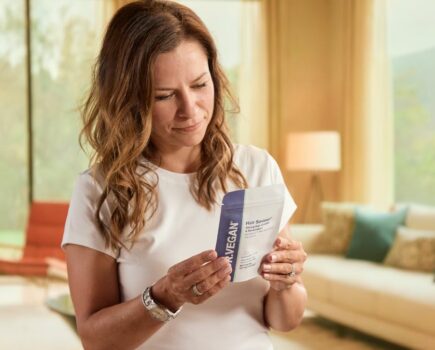Dr Lisa Das shares her gut health MOT guide, to ensure whilst in quarantine you’re staying happy and healthy.
Our gut health is thought to be connected to almost every other part of our health. It contributes to our immune system, brain health, sleep, mood, digestion and heart health.
Whilst staying at home, it’s important to remain happy and healthy. We spoke to Dr Lisa Das on how to do an at-home gut health MOT.
Dr Das says, “We generally take our health for granted until something goes awry. Simple pleasures such as enjoying meals with friends and family can become life-changing when the gastrointestinal tract starts acting up.
“Before symptoms are present there are a few general checks we can do at home to try to prevent problems becoming prevalent.”
Here are five things to look at for your gut health:
1. Eyes
Not only the window to your soul, but they also offer a glimpse into your general health. Particularly prominent eyes can be a sign of thyroid disease. Yellowing of the whites of the eyes may signify liver problems. Dr Das says, “Looking at the colour of the lower inner eyelid may show a paleness that is a sign of iron deficiency anaemia — a prevalent condition in women especially, and something that requires further testing through your doctor.
“Droopy eyelids affecting both eyes may signify an autoimmune (body attacking itself) condition that needs treatment. Dry eyes can be environmental, but also can be a hint at autoimmune conditions affecting the tear glands, salivary glands and various joints also.”
2. Oral health
We all brush our teeth twice daily, but paying a bit more attention to your mouth can highlight problems early. Dr Das says, “Small aphthous ulcers occur in many around colds/flu, but if they’re not healing in a reasonable time or if they’re recurring, these can be a warning sign for more serious problems such as inflammation of the bowel or intestines.
“It’s important to visit your dentist when you are able to do so as they may detect dental signs of acid reflux.”

3. Skin
In general, it’s good to check for rashes and moles. A blistering rash that’s very itchy in patches may be a sign of Coeliac sprue which is a gluten-related disease.
Dr Das says, “If both palms are redder than usual, this may signify too much alcohol use or liver diseases. The nails may be very pale, or blueish for those with iron deficiency or a low blood count, and may even become ‘spoon-like’.
“Nails can become brittle with low levels of calcium, magnesium, zinc, or B vitamins and folic acid.”
4. Waist measurement
A simple check of your waist circumference can be indicative of potential problems of heart disease or diabetes, which in turn may be related to too much fat in the liver.
Dr Das says, “For women, anything over 88cm is a warning sign. This is measured at the top of the hip bone, generally in line with the belly button, and not pulled too tight.”
5. Stools
Well, no-one likes to talk about it, but it’s a natural function. There are a few clues to our gut health in viewing our stools.
Dr Das says, “It’s good to know what your ’normal’ is as that varies quite widely. If there is any prolonged deviation from your ‘normal’ that’s a cue to see your doctor.
“The colour of the stools may indicate internal bleeding (if black and sticky, or burgundy or bright red). A pale, whiteish stool can signify problems with the pancreas, and foamy fatty stools may indicate fat maldigestion.
“The time taken over bathroom processes is also important as generally one should be finished within 15 minutes or so. A lot of pushing can hint at constipation, or perhaps pelvic muscle issues. The feeling of never being completely finished should also prompt a visit to your doctor.”
For more gut health, visit the NHS website and if you have any concerns, be sure to visit your GP. You can find more about Dr Lisa Das at OneWelbeck.








